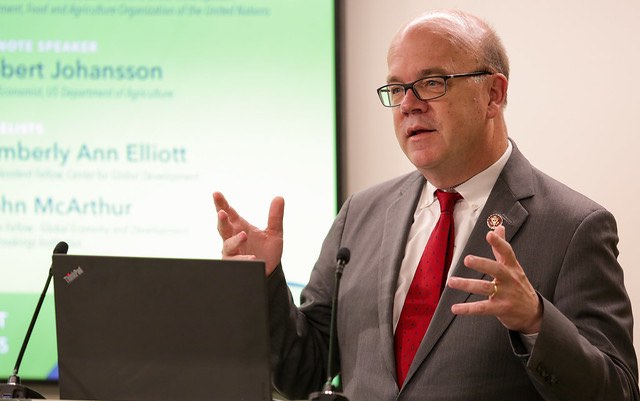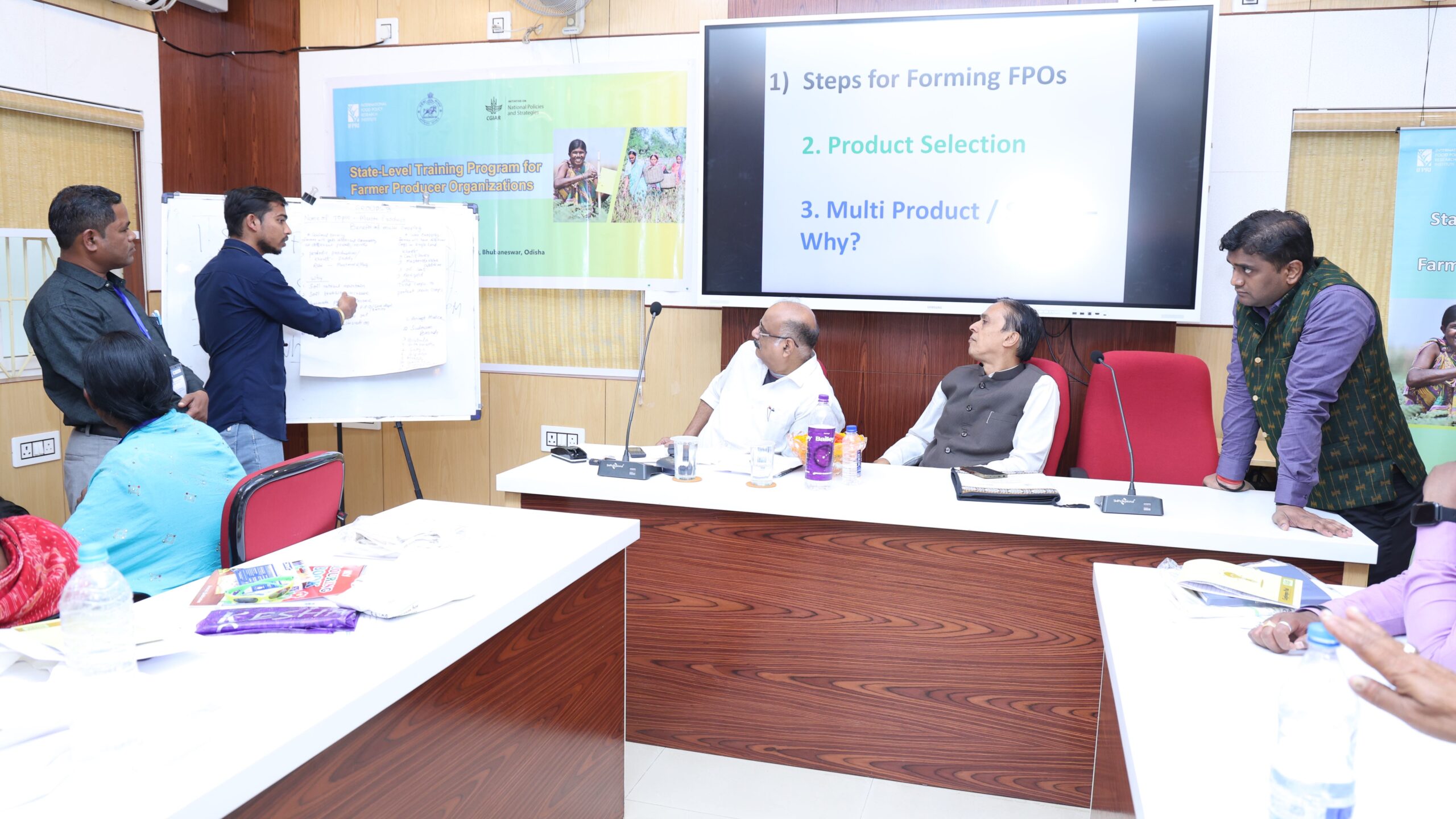After decades of steady decline, the trend in world hunger—as measured by the prevalence of undernourishment—reverted in 2015, remaining virtually unchanged in the past three years at a level slightly below 11%. As a result, more than 820 million people globally were still hungry in 2018, the latest UN State of Food Security and Nutrition in the World (SOFI) report finds, underscoring the immense challenge of achieving the Zero Hunger target by 2030.
“More than a quarter of the world’s population struggles to eat safe, nutritious, and enough food, and that includes 8% of the population in Northern America and Europe,” stressed U.S. Rep. Jim McGovern (D-Mass.), Co-Chair of the House Hunger Caucus, at a July 18 special event organized by the FAO Liaison Office for North America and IFPRI to discuss the report’s findings. “I am grateful that the 2019 report, for the first time, takes a hard look at people affected by moderate food insecurity, and has identified obesity as a global problem—one that is growing,” he concluded.
This 2019 report introduces a second indicator for monitoring Sustainable Development Goal (SDG) Target 2.1: The Prevalence of Moderate or Severe Food Insecurity, based on the Food Insecurity Experience Scale (FIES). While severe food insecurity is associated with the concept of hunger, people experiencing moderate food insecurity face uncertainties about their ability to obtain food and are forced to compromise on the quality and/or quantity of the food they consume. Considering all people affected by moderate levels of food insecurity together with those who suffer from hunger, the report estimates that over 2 billion people worldwide do not have regular access to safe, nutritious and enough food.
With the increasing number of individuals facing hunger, and an estimated 2 billion food insecure people, “we may actually be moving away from the SDG2 targets,” said Vimlendra Sharan, Director of the FAO Liaison Office for North America.
Hunger is on the rise in almost all sub-regions of Africa, with a prevalence of undernourishment at almost 20%. The prevalence of food insecurity (moderate or severe) is much higher in this region than in any other part of the world, affecting more than half of the population. Hunger is also rising in Latin America and the Caribbean, as well as Asia. The report also includes information on the significant increase in the prevalence of undernourishment in Venezuela, where hunger increased from 6.2% to 21.2% between 2012 and 2018.
IFPRI Director General Shenggen Fan explained that the global economic slowdown will continue to exacerbate the suffering of poor and hungry people. IFPRI’s Compact2025 initiative, aimed at ending hunger and undernutrition by 2025 by bringing stakeholders together to set priorities, innovate and learn, fine-tune actions, build on successes, and share lessons, can accelerate progress toward achieving the SDGs, he explained. “My personal belief is if we wanted to achieve all the SDG goals by 2030, we must end hunger and malnutrition first, maybe even before 2030,” Fan concluded.
“The slow progress on reducing low-birthweight and child stunting, along with an increase in anemia and obesity, indicates the severe challenges of ending all forms of malnutrition by 2030, unless we take scaled-up and bolder action,” reiterated Máximo Torero, Assistant Director-General of the FAO Economic and Social Development Department, in his overview of the findings of the report.
Hunger is also becoming prevalent in middle-income countries that experience poor economic growth. “Out of 77 countries that experienced a rise in hunger, 65 countries saw their economy slowing down or contracting, 44 out of the 65 countries are middle-income countries, only 19 are low-income countries,” said Torero. Economic shocks can exacerbate the severity of food insecurity caused by climate change and conflict.
In addition, periods of extreme price volatility further affect food security and nutrition, especially in food import dependent countries, where a 1% increase in the countries’ commodity dependence leads to an 8% increase in undernourishment. Torero emphasized that the rise in income inequality in nearly half of the countries worldwide creates a further obstacle to ending hunger. He emphasized that having policies to counteract economic cycles and fostering pro-poor and inclusive structural transformation will be crucial to safeguarding food security and nutrition.
Keynote speaker Robert Johansson, Chief Economist at the U.S. Department of Agriculture (USDA), focused his remarks on the production side of food security, pointing out that there are growing concerns over natural resources, including access to water, with half of the world’s population currently living in areas experiencing water scarcity at least one month per year. Food insecurity remains a particular problem in Africa South of the Sahara, where significant population growth is expected to continue through 2050, Johansson explained, adding that agricultural production needs to keep pace with relative population growth.
Science and technology, including biotechnology, can contribute to increased productivity and economic returns, Johansson, said. USDA projections anticipate a reduction in global food insecurity over the next 10 years, he said, with the food gap expected to shrink despite rising demand. These factors, along with countercyclical measures to stabilize economic growth, continued investments in agricultural productivity, and reduced barriers to trade, can help to meet some of the challenges outlined in the 2019 SOFI report, he concluded.
Panelist John McArthur, Brookings Institution Senior Fellow for Global Economy and Development, grappled with what he called a “complex puzzle”: Undernourishment is worsening while stunting and extreme poverty are declining, and rates of wasting are not changing. “We need to be thinking of the three Ps of the specific development goals—specific people in specific places facing specific problems,” McArthur said. He called for the establishment of a body to examine and oversee food metrics and evaluation, which would sort through the data and support and inform policy makers.
In a year of many funding replenishments on programs that vary from the World Bank’s concessional lending to tuberculosis, malaria, and vaccine programs, McArthur concluded by suggesting that people overseeing each ask themselves the question: How is the issue of ending hunger, undernourishment, and malnutrition benefiting from my country level program?
“I don’t want us to forget about the hundreds of billions of dollars that our countries are putting into wasteful and trade distorting subsidies as well that are not helping us with food security in a sustainable way,” said Center for Global Development Non-Resident Fellow Kimberly Ann Elliott. Wrapping up the presentations, she noted that OECD countries continue subsidies for products including grains and meats but not fruits and vegetables—policies that not only contribute to the challenge of obesity, but also undermine efforts to combat climate change. This reality, along with nearly no funding for innovation by OECD countries, Elliott concluded, is the complete opposite direction that we should be heading, and more attention should be paid to where limited resources are being invested.
Ahdi Mohammed is a Communications Consultant with the FAO Liaison Office for North America; Katarlah Taylor is an IFPRI Senior Events Specialist.







